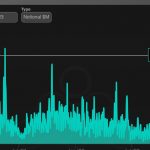Ethereum (ETH) co-founder Vitalik Buterin continues to gain traction with cryptocurrency trading. Buterin’s transactions, whose wallet address is public, can also be seen clearly. According to the latest data, a wallet bearing Buterin’s name has processed $700,000 in transactions. Here are the details…
Vitalik Buterin spent $700,000
A wallet named after Ethereum co-founder Vitalik Buterin sold its lesser-known RAI stablecoin over the weekend. Buterin sold his RAI tokens for 500 Ethereum, or just over $700,000. He then used the funds to purchase the stablecoin USD Coin (USDC), which was trading below the $1 stable at the time. The wallet labeled “vitalik.eth” was created seven years ago and holds more than 5,360 ETH as of Tuesday.
#PeckShieldAlert Vitalik-labeled address has deposited 500 $ETH in Reflexer to mint 150k $RAI, and swapped 132.5k $RAI for 378.5k $USDC. Additionally, they swapped 17.5k $RAI for 50k $DAI within the last 3 hourshttps://t.co/dM1pheTW0x pic.twitter.com/camCgl1fsk
— PeckShieldAlert (@PeckShieldAlert) March 11, 2023
Although crypto wallets are given a name with Ethereum Names Service (ENS) domains, the wallet tagged with that name may not be held by the person in question. Blockchain analytics firm PeckShield made the following statement on Sunday:
Address tagged Vitalik deposited 500 ETH on Reflexer to get 150k RAI and exchanged 132.5k RAI for 378.5k USDC. Also, they exchanged 17.5k RAI for 50k DAI in the last 3 hours.
Vitalik called the RAI token “unique”
cryptocoin.com As we reported, Buterin previously acknowledged RAI’s unique stablecoin mechanism in a blog post. Unlike many other stablecoins, the RAI issued by Reflexer Finance is not pegged to any fiat currency and is instead backed by Ethereum. Each RAI is currently available for $2.7 worth of ETH.

On the other hand, USDC fell over the weekend after the collapse of Silicon Valley Bank (SVB) on Friday caused a market-wide drop in cryptocurrencies. Among the companies affected was US-based stablecoin issuer Circle, which as of January 17 holds a portion of USDC stablecoin reserves at Silicon Valley Bank. USDC fell below $0.90 on Saturday. It then traded at $0.87, hitting a lifetime low.
But USDC regained its steady Monday night, posting a 10 percent gain in just over 48 hours for those who bought affordable USDC. Some traders have bet on a gradual recovery to the $1 level by buying relatively inexpensive USDC for a potential gain of 10 percent if the tokens reach their targeted $1 stable. Buterin may have planned to do something like this.







